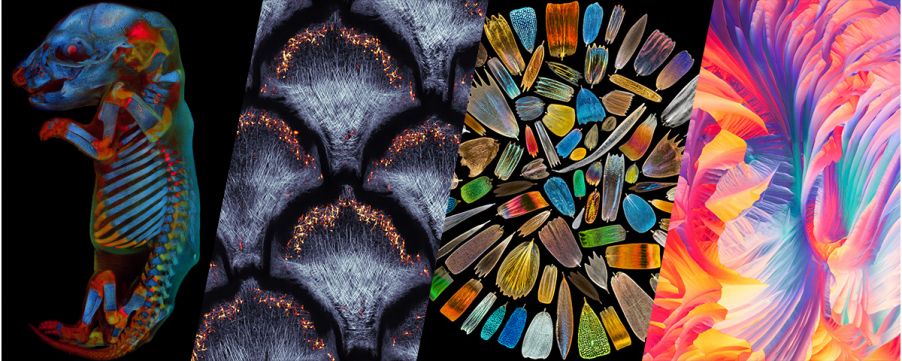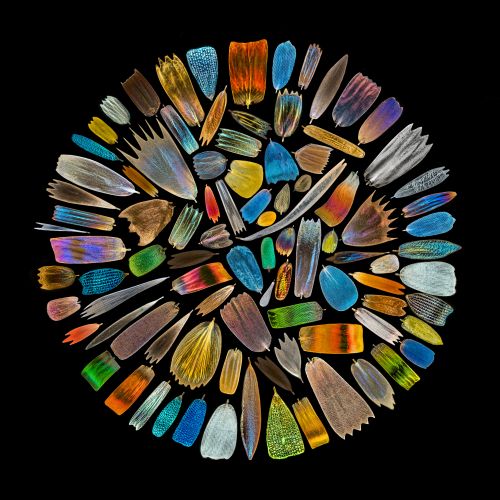From rat embryos to butterfly scales and snakeskin, the images submitted to our second Global Image of the Year (IOTY) Life Science Light Microscopy Award truly celebrated the art of science and demonstrated the beauty that can be found beneath the microscope.
After reviewing a record number of submissions—nearly 700 entries from 61 countries—on artistic and visual aspects, scientific impact, and microscope proficiency, our jury of global representatives has chosen the winning images.
Take a look at the winning and honored images below and learn more about the innovative techniques used to capture them.
The Global Prize Goes to Werner Zuschratter
Werner Zuschratter from Germany was selected as the global winner for his eye-catching image of a whole rat embryo captured with a confocal microscope.
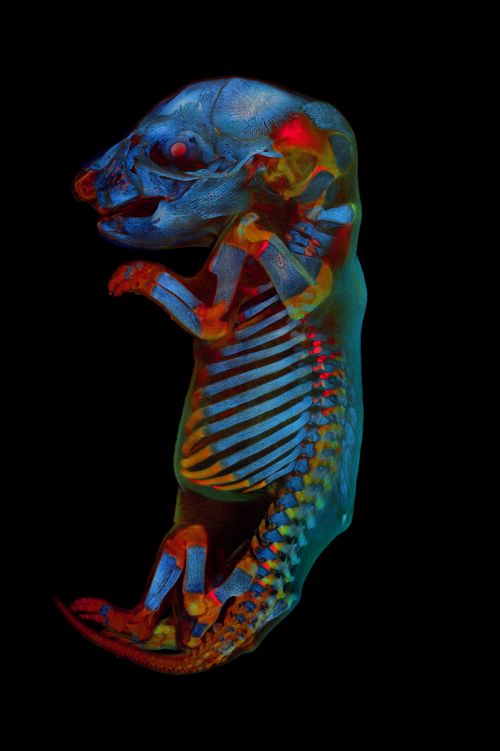
Global winner Werner Zuschratter captured a 3-channel, large-scale confocal image of a fixed and cleared whole rat embryo; two channels show the different autofluorescence colors of the tissue, while the third channel shows the skeleton stained by alizarin red
Werner explained how he captured this impressive image:
“It is a challenge to capture a widely transparent sample of this size completely in 3D with a microscope and differentiate tissues by their specific autofluorescence (either by spectral separation or due to their lifetimes),” Werner said. “For this reason, we reused old samples originally prepared for development studies and imaged them using confocal and time-resolved light-sheet microscopy. The scans resulted in impressive pictures that emanate something exceptionally aesthetic but also stimulate reflection.”
Juror Graham Wright, PhD, Acting Director of A*STAR’s Research Support Centre (RSC) and the Director of the A*STAR Microscopy Platform (AMP) in Singapore, described the winning submission as “a truly striking image that I’m confident will inspire the next generation of biologists.”
For the grand prize, Werner will receive an Olympus SZX7 stereo microscope with a DP27 digital microscope camera.
Regional Prizes Awarded to XinPei Zhang, Justin Zoll, and Grigorii Timin
In addition to the global award, three regional prizes were awarded to XinPei Zhang (China) for Asia, Justin Zoll (USA) for the Americas, and Grigorii Timin (Switzerland) for EMEA. Each regional winner will receive an Olympus CX23 upright microscope.
Americas winner Justin Zoll, who captured a vibrant panoramic image of L-glutamine and beta-alanine crystals using polarized light microscopy, discussed his winning image.
“What I find to be most striking, and what I am happy to share with others, is the elegant and complex forms that can come from such simple chemical and physical interactions,” Justin said. “The same simple sets of rules that allow life to evolve can be seen showing off their fascinating properties in real-time under your microscope.”
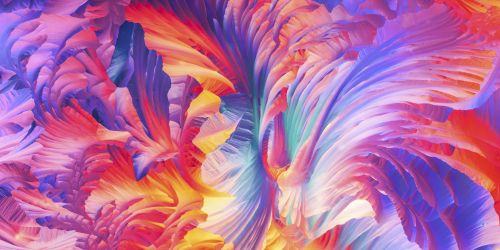
Americas regional winner Justin Zoll captured a panoramic image of L-glutamine and beta-alanine crystals using polarized light microscopy
Dr. Xiang Yu, a professor in the School of Life Sciences at Peking University and investigator of the Peking-Tsinghua Center for Life Sciences and the McGovern Institute for Brain Research, commented on the image’s artistic qualities derived from nature.
“This beautiful abstract image is generated from simple chemical compounds, fully demonstrating that nature is the greatest artist,” said Xiang.
Asia-Pacific winner XinPei Zhang won with this stunning image of scales collected from the wings of over 40 species of butterflies. Each scale was photographed individually and assembled into one image.
Juror Siân Culley, a Postdoctoral Research Associate at the RC Laboratory for Molecular Cell Biology, UCL, remarked on the image’s unique aesthetic.
“When looking at each beautiful scale in this image, you are struck by the incredible diversity of shapes and colors shown in different species of the same insect,” said Siân.
Juror Graham Wright added, “The composition and variety of different butterfly scales makes for a mesmerizing image.”
EMEA regional winner Grigorii Timin imaged scales of a different type: snakeskin. His image of collagen fibers and dermal pigment cells of snakeskin impressed the jury thanks to its unique structural components and colors.
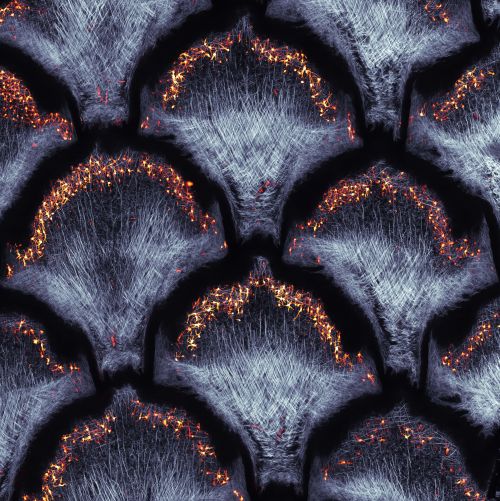
EMEA regional winner Grigorii Timin imaged collagen fibers (second-harmonic generation) and dermal pigment cells (autofluorescence) in the embryonic skin of an African house snake; the image is a maximum intensity projection of 10 confocal slices
Juror Siân Culley commented, “There is something very pleasing about the regular shapes within this image—the scalloped shapes feel like they have come straight out of an art deco design.”
Honorable Mentions
This year’s honorable mentions include Jan Martinek (Czech Republic), Laurent Formery (France), Matt Inman (Australia), Sayantan Datta (India), Derek Sung (USA), YiXun Su (China), MingShu Zhang (China), Nadia Efimova (USA) and Walter Ferrari (Argentina).
Congrats to All—and Thanks for Continuing to Make Our Global IOTY Award a Success
Thanks for celebrating the art of science with us and making our second Global IOTY Award a success by capturing the microscopic world.
Satoshi Nakamura, Vice President of Scientific Solutions Global Marketing at Olympus Corporation, expressed enthusiasm about the bold, beautiful, and often breathtaking images. “Not only did we see a record number of submissions, but the quality and creativity of those images were exceptional,” said Satoshi. “It’s amazing to see the unexpected art people capture with a microscope.”
Our 2021 competition will be here before you know it, so stay tuned to learn more and be first to know about the prizes. We can’t wait to see the hidden wonders you capture through the lens of a microscope.
Related Content
The Art and Science of Neurogarden—Meet the 2019 IOTY Global Winner
Revealing the Beauty of the Microscopic Scale—IOTY’s 2019 Asia-Pacific Regional Winner
Combining Passions for Science and Art—Meet the 2019 IOTY Americas Regional Winner
